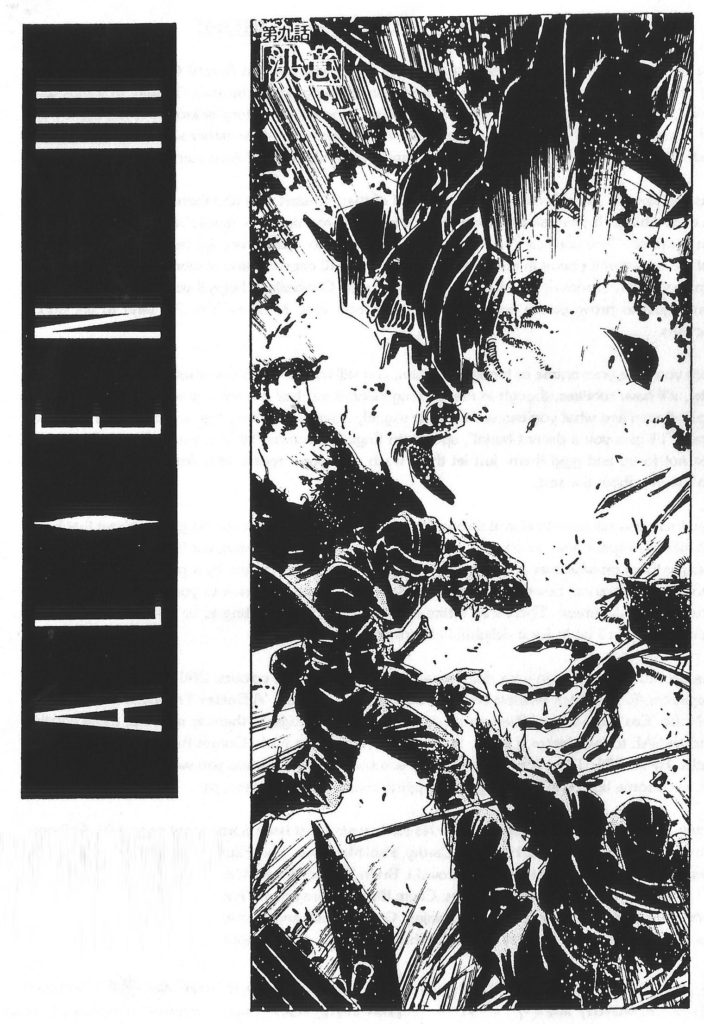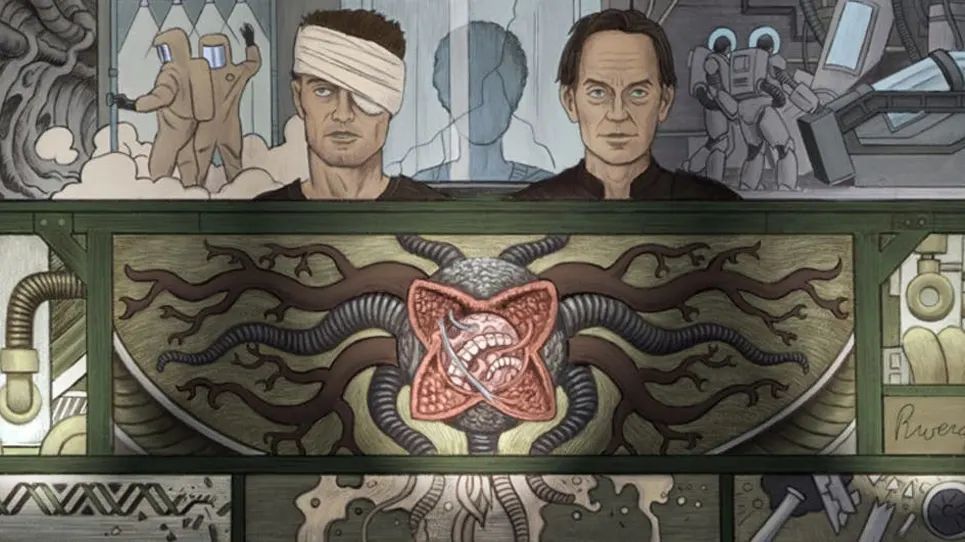‘Alien III’ by William Gibson
(Revised draft of screenplay, from a story by David Giler & Walter Hill)
Three queens, mutoid aliens, countless face-huggers, chest-bursters and more than a few treacherous “company men” form a potentially apocalyptic threat to Mankind in this, sadly cancelled, version of the second sequel to Ridley Scott’s superb ‘Alien’ (1979).
Cyberpunk author Gibson is widely acclaimed as the saviour of modern SF, or at least he was during the past decade! Here, his trademarks of masterly action sequences and slick handling of future technologies create a strongly convincing scenario of culture crashes and future schlock.
At the end of ‘Aliens’ (1986), we saw Ripley, Newt, Hicks and a damaged Bishop drift off into hypersleep having survived the attacks of the aliens and their queen on planet LB-426, “Acheron” (Hell, by any other name). The complement of space marines gone, they have the troop-transport starship Sulaco all to themselves until a navigation error puts them off course, and in violation of the space treaty of an independent ‘Union of Progressive Peoples’. Commandos from the UPP station “Rodina” board the Sulaco but are instantly attacked by aliens! They beat a hasty retreat taking the torso of Bishop with them.
The Sulaco cruises through UPP space, and winds up at the Colonial base, “Anchorpoint”, where Ripley, Newt and Hicks are revived. All three are baffled by the absence of Bishop, having slept through the UPP intrusion, and the port authorities keep them in the dark in an attempt to contain and suppress information about the aliens. Meanwhile, secret experiments are being conducted by both UPP and the Colonial Administration that sent the Sulaco expedition to LB-426 in ‘Aliens’. Teams of civilian and military scientists succeed in cloning and mutating alien tissue samples collected from the Sulaco, but with disastrous results.

The action is split between the two opposing stations of humans who, inevitably, are forced to unite against the rapidly growing (in every sense) alien menace. Ripley isn’t in this story much – she’s dispatched to Earth quite early in the proceedings, on medical grounds. Newt and Hicks remain on Anchorpoint as they’re the only witnesses to what these alien monsters can do, and their knowledge becomes vital in later alien-human conflicts. New characters of various ethnic origins (Vietnamese, etc) will come as no surprise to fans of Gibson’s SF novels and his penchant for mega-corporation intrigues and cutting-edge technologies is also plainly obvious.
The paranoia and loss-of-humanity themes last seen in ‘Invasion of the Body Snatchers’ and ‘The Thing’ (1982) are very much in evidence here. Alien DNA combines far too easily with the human variety, and all possibilities of meaningful co-operation between Man and Alien are decisively flushed out the nearest airlock when the adaptable alien’s predatory nature is proven time and again. Suspense and conspiracies take a back seat in the fast-moving final stages, as a running battle develops between fleeing human survivors of Anchorpoint and pursuing alien hordes. The climactic action is relentless and horrific, as Hicks and his motley band head for the lifeboats, only to find the creatures waiting in ambush.
With so many effects and sets required to turn this epic SF horror into film, it’s small wonder the producers took one look at the $90 million estimated price tag and rejected Gibson’s draft! The movie eventually produced at Pinewood reportedly bears little resemblance to this and prospects for any measure of success for the much troubled project took another dive recently with the appointment of David Fincher as director. He’s best known for Madonna’s ‘Vogue’ video…
